

You are welcome to stay at the Conference’s venue, the Hilton Mexico City Reforma. The hotel is in the heart of the city's stock market, close to local attractions, shops, galleries, restaurants, and museums. It is the only hotel in the Mexican capital with a two-story convention center with a capacity of 5,000 people.
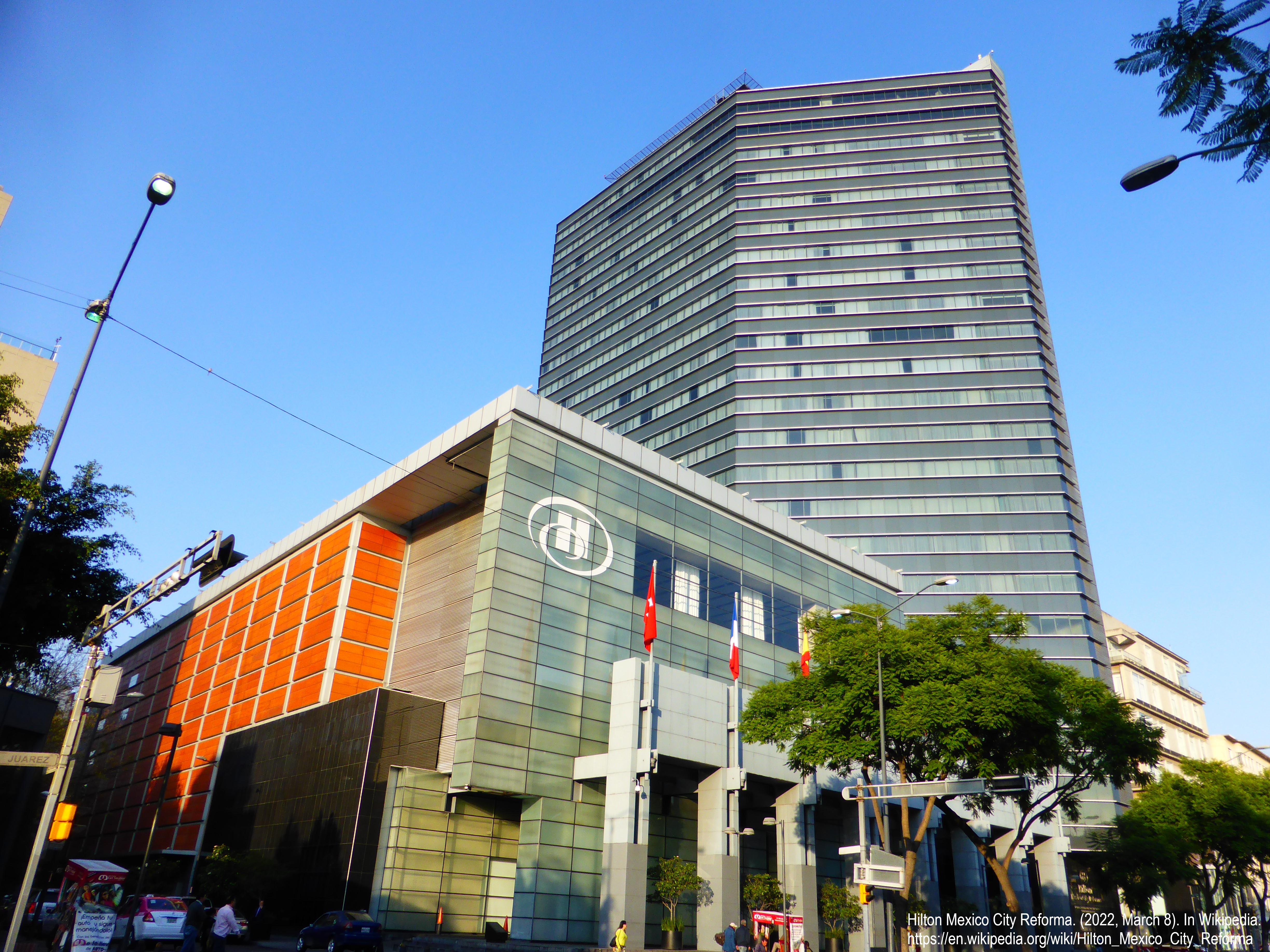
If you wish to stay somewhere else, there are several other hotels in the vicinity of the venue that you can choose. Here are three options:
| Name & Address | Regular rates |
|---|---|
|
$1,787 MXN ~ $104 USD per night
(Single room, 1 king size bed) |
|
|
$1,543 MXN ~ $90 USD per night
(Executive room, 1 king size bed) |
|
|
$1,500 MXN ~ 87 USD per night
(Standard room, 1 queen size bed) |
Visitors to Mexico are required to present the following documentation:
Visitors to Mexico need a valid passport, for at least six months from the date of entry. Transit countries and airlines may have additional requirements.
The foreigner who presents any of the following documents will not require a Mexican visa:
a) Document proving permanent residence in Canada, the United States of America, Japan, the United Kingdom of Great Britain and Northern Ireland, any of the countries that make up the Schengen Area, as well as in the member countries of the Pacific Alliance (Chile, Colombia and Peru).
b) Visa for Canada, the United States of America, Japan, the United Kingdom of Great Britain, and Northern Ireland or any of the countries that make up the Schengen Area.
Find the list of countries that Mexico require their nationals to apply for a visa here:
https://www.gob.mx/cms/uploads/attachment/file/707700/Si_visa_ok.pdf or https://embamex.sre.gob.mx/finlandia/index.php/traveling/visas
Visitors are required to present a Multiple Migratory Form (FMM). The FMM can be obtained from the airline or at the port of entry, but to expedite your registration at the border, you can now fill out and print it in advance in this link.
Be aware that immigration officers at the port of entry may request certain documents to prove the purpose of your visit.

Bajo el régimen CC BY 4.0 (Creative Commons Atribución 4.0 Internacional). Image © Thomas Kole
Mexico City’s foundation can be traced back to 1325 under the name of Tenochtitlan, the capital city of the Aztec empire. Legend has it that the God Huitzilopochtli ordered the Aztecs to build the city on the same place where they found an eagle perched on a cactus while devouring a snake. Upon seeing such a scene on what was then a lake, the Aztecs founded the city in the Valley of Mexico. The legend is famously depicted in the country’s flag.
Located on what was then an island in Lake Texcoco, Tenochtitlan was the largest city in the western hemisphere and, as historians have stated, one of the three largest cities on Earth. When the Spanish conqueror Hernan Cortes first saw Tenochtitlan in the early 16th century, the city reminded him of Venice, given its glistening causeway network.
Today, Mexico City is among the largest metropolises in the American continent, and it serves as a financial and cultural influence focus point in the region. The city’s center is 2230 meters above sea level. If you live closer to sea level, you may run out of breath due to the altitude during an adjustment period.
Weather-wise, temperatures in May range from 32°C during mid-day highs to 12°C at night.
Download the Soft Landing Brochure HERE
Amazing architecture, beautiful parks, colorful neighborhoods and lots of museums, Mexico City has something to excite your interest anywhere your head turns to. Right by the conference venue you can _nd Mexico City’s oldest urban with paved paths, decorative fountains, and statues. It used to be an Aztec marketplace and is frequently used for civic events. From here you can see Benito Juarez’s Hemicycle, a Neoclassical monument commemorating the Mexican statesman Benito Juarez. The monument is flanked by marble Doric columns, and shows Benito Juarez sat with two allegorical female statues, representing the fatherland and law, beside him.
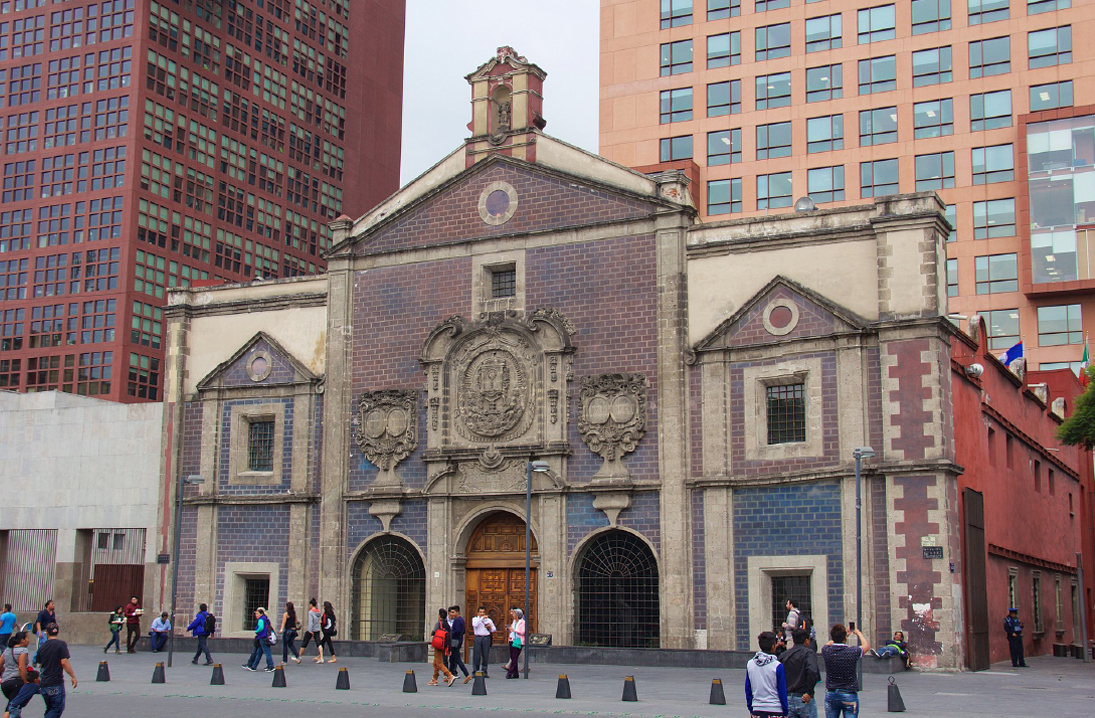
Bajo el régimen CC-BY-SA-4.0. Image © Mike Peel (www.mikepeel.net).
Across from Juarez’s hemicycle, there is the Corpus Christi Church built between 1720- 1724. Originally a Catholic Temple, it now holds a collection of 27 thousand historical documents dating from the sixteenth to the twentieth century. This was the first convent exclusively for indigenous women and, sadly isn’t open to the public.
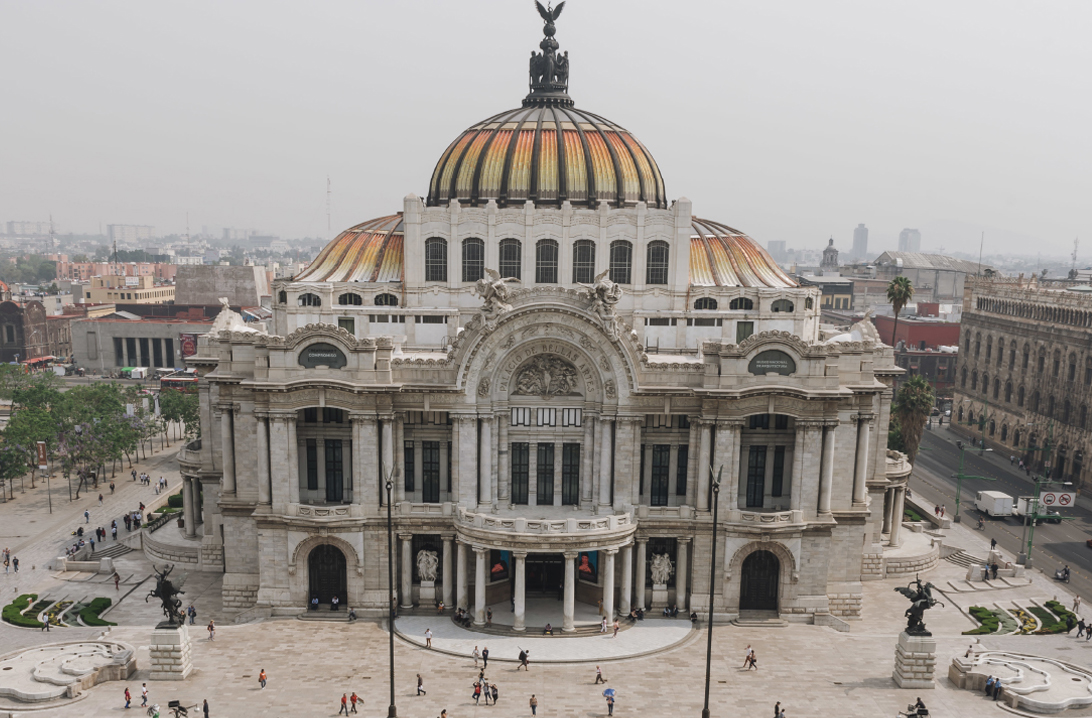
Furthermore, a few steps away from the conference’s venue you’ll see the Palace of Fine Arts (Palacio de Bellas Artes) which includes a large theatre, a concert hall, the National Museum of Architecture, and the Museum of the Palace of Fine Arts. In this area there’s also the Postal Palace, a beautiful structure from the early twentieth century, with a palatial appearance and a naval museum.

A few blocks down the street, you’ll find yourself in the city's historic downtown. This area comprises the Constitution Plaza (known as El Zócalo); the Metropolitan Cathedral; the National Palace; and the archaeological site of the Main Temple (Templo Mayor). In this neighborhood there’s also the Gran Hotel Ciudad de México, with its Tiffany glass ceiling (c.1908), designed by French artist Jacques Grüber, consisting of 20,000 separate pieces of glass. This Art Nouveau spectacle is among the finest glasswork anywhere in the world.

Mexico City has a myriad set of renowned museums, such as the Modern Art Museum (Museo de Arte Moderno) and the National Anthropology and History Museum (Museo Nacional de Antropología e Historia), which house some of the country's finest collections of their respective trades. Close to the conference venue, you’ll find the Museum of Memory and Tolerance (Museo Memoria y Tolerancia), dedicated to disseminating the importance of non-violence and human rights by raising awareness about the brutality of genocide and other crimes throughout history. Across the street, you’ll also find the Diego Rivera Mural Museum (Museo Mural Diego Rivera) where you can enjoy one of his most famous murals “Dream of a Sunday afternoon in the Central Alameda” (Sueño de una tarde dominical en la Alameda Central). The city offers options for every budget, from gourmet food to street-cart delicacies, high-end hotels, and quaint hostels deep downtown.
For more information, please visit the OFFICIAL VISITOR’S GUIDE
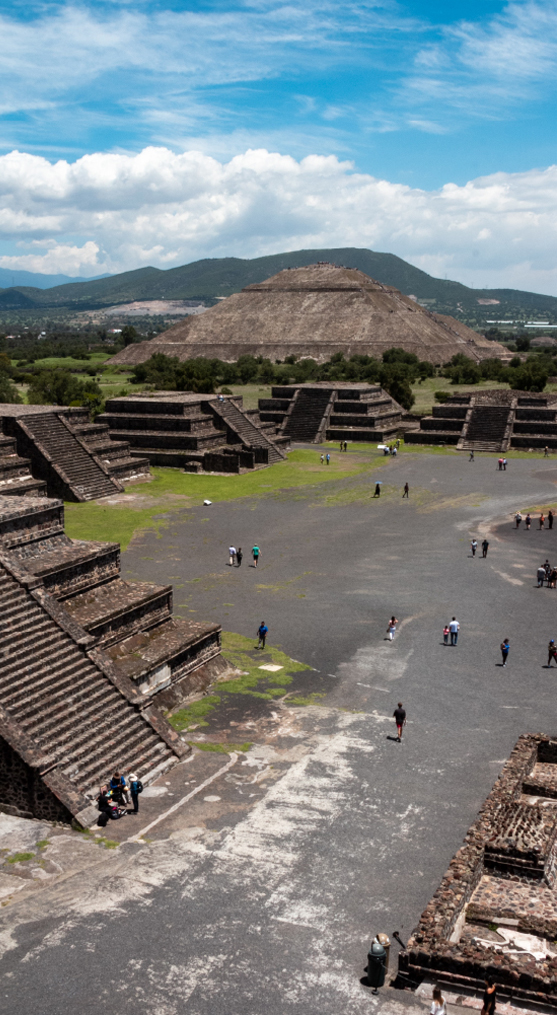
There are several interesting places to visit nearby Mexico City, for example, the ARCHAEOLOGICAL SITE OF TEOTIHUACAN located in the State of Mexico, approximately 40 km northeast of Mexico City. Here you can visit monumental buildings such as La Ciudadela, and the Temple of the Feathered Serpent, the Avenue of the Dead, the Pyramids of the Sun, and the Moon, among others. Additionally, the archaeological site has two specialized museums: one about Teotihuacan culture and the Museum of Teotihuacan Murals “Beatriz de la Fuente”.
There is also the STATE OF PUEBLA located 130 km southeast of Mexico City. The capital of this state is an UNESCO World Heritage site and there are seven Magical Towns (recommended for tourists). Throughout Puebla you can see natural beauty, historic monuments and landmarks, pre-Hispanic and colonial sites, as well as rich, beautiful artisanal textiles and some of the country’s most appreciated cuisines
If you wish to visit any of these sites, you must plan your trip in advance as it might take you a whole day to travel there and back. We recommend that you ask your hotel’s front desk for detailed touristic information.
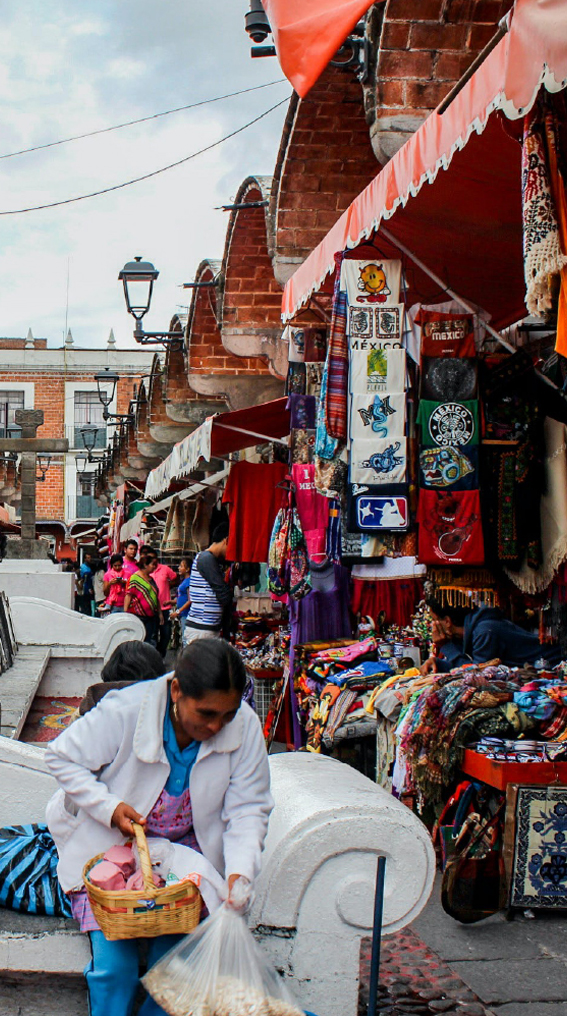


There are several interesting places to visit nearby Mexico City, for example, the ARCHAEOLOGICAL SITE OF TEOTIHUACAN located in the State of Mexico, approximately 40 km northeast of Mexico City. Here you can visit monumental buildings such as La Ciudadela, and the Temple of the Feathered Serpent, the Avenue of the Dead, the Pyramids of the Sun, and the Moon, among others. Additionally, the archaeological site has two specialized museums: one about Teotihuacan culture and the Museum of Teotihuacan Murals “Beatriz de la Fuente”.
There is also the STATE OF PUEBLA located 130 km southeast of Mexico City. The capital of this state is an UNESCO World Heritage site and there are seven Magical Towns (recommended for tourists). Throughout Puebla you can see natural beauty, historic monuments and landmarks, pre-Hispanic and colonial sites, as well as rich, beautiful artisanal textiles and some of the country’s most appreciated cuisines
If you wish to visit any of these sites, you must plan your trip in advance as it might take you a whole day to travel there and back. We recommend that you ask your hotel’s front desk for detailed touristic information.
This conference is currently not open for registrations or submissions.